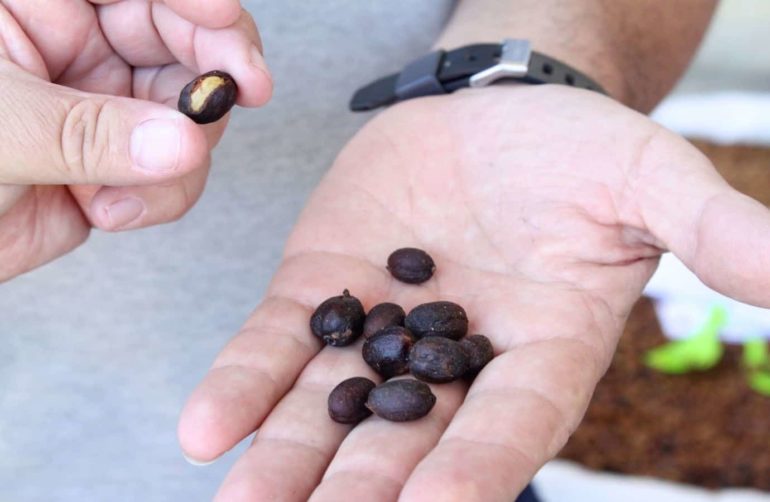“¿Un cafecito?”
This question is ubiquitous in Costa Rica, but I know I am in for a unique experience. I am sitting in the tasting room of Las Lajas, a micro-coffee mill in the hills of the Central Valley. The terrace outside offers a sweeping view of the owner-operator’s crops. Thick-trunked, leafy trees protect the coffee plants from the dry season’s fierce sun. On the farm itself, harvest season is winding down, and a sense of calm permeates the premises. Its owners, Francisca Cabillo and Oscar Chacón Solano, are visibly relieved to have some time for themselves and their visitors, reveling in stories about how their business came to be.
With a proud smile, Francisca offers me a fragile china cup of black coffee. She offers no milk, no sugar. I intuitively understand that it is a sacrilege to ask for some. Rather, I take a sip—and am astounded by the complex array of flavors unfolding in my mouth. I’d describe it as flowery, though the word doesn’t do the experience justice. I interrupt my reveries to catch Francisca’s easy laugh: “I just can’t drink coffee in shops anymore. Maybe I should just bring a pouch of our own and simply ask them to brew it.” I’ve clearly arrived at the crème de la crème of Costa Rican coffee production.
The fact that Costa Rica still produces coffee is a notable anomaly. In this Central American success story, a country rapidly transforming into a service economy (64% of labor force occupation and 72% of GDP), it seems anachronistic that farmers still work the land, seven days a week, year-round. “It’s a hard job,” Francisca concurs. “But also the best job in the world. Just look at our daily view!” Having arrived from gridlocked, concrete-covered capital of San Jose, I can definitely see her point. Yet, the challenges for Costa Rican coffee producers are real: they face notably higher labor costs and living expenses than virtually any other coffee-producing country,crop-specific diseases devastate yields, urban sprawl is unrelenting in the Central Valley, and opportunity costs are high. “I know no family whose next generation is passionate about continuing to grow coffee,” Francisca sighs.
Costa Rica has only one argument, one secret weapon, in the preservation of coffee production: its quality. And if quality is the superpower, the Chacón Solanos are its superheroes. It’s allowed them to turn a debt-laden family farm into a thriving micro-enterprise with customers around the world. The Chacón Solanos produce “honey processed” coffee. The operation sun-dries coffee berries with some pulp still attached to the coffee bean, which then absorbs the natural sugars of the mucilage. “When you roast it correctly, the sugars caramelize and your coffee gets sweet flavor nuances,” Oscar explains. “Plus, since we don’t use the wet-milling process, this coffee is inherently more environmentally friendly,” adds Francisca. “What counts most for our clients, however, is the uniqueness of the product.”
The size of their micro-mill is key to their success. The specificity required to reach this quality demands control of all production steps, and the flexibility to make quick adjustments—whether to finicky weather or particular client wishes. “We are constantly experimenting. The first question any visitor asks is ‘What’s the next new thing on the horizon?’”
On my hunt for sustainable coffee here in Costa Rica, the Chacón Solanos tick all the boxes: they are financially viable, have created 10 jobs for the local community and revived this rural town, and produce their coffee—much of it organic—with an impressively low environmental impact. Of course, not every coffee farmer can go this route, since the market segment of single-origin specialty coffees is comparatively tiny—but, oh, the potential!
So, the next time you are shopping for coffee, think about heading for the high-quality varieties; chances are, they are some of the most sustainable choices.






